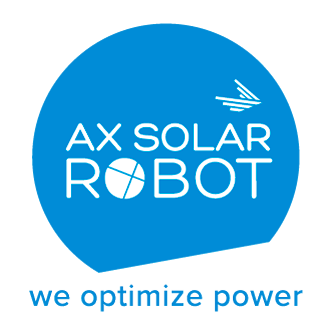Solar farms are a sub-section of ground-mounted power plants and account for a significant proportion of global solar production. Although they can sometimes be combined with agricultural production, this is not always the case. The aim of this article is to take a closer look at the various possible configurations in terms of orientation and technology used.
How a solar farm works
The orientation of the panels on a solar farm can be either fixed (a single orientation), in which case the panels face due south for optimized production.
The panels can also be fixed, but in an east/west orientation, the aim is to optimize the number of panels on a single site.
The orientation of the panels depends on their mounting system. There are a wide variety of fastening systems on the market, but two main types can be identified: fixed installations and tracker systems.
Fixed installations are the least expensive and have the longest service life, but panel production is not optimal.
Tracker systems are another alternative to fixed systems. More expensive, tracker systems maximize production by following the sun, allowing you to take full advantage of the sun’s rays throughout the day.
Today’s solar farms tend to get bigger and bigger as time goes by, just like the solar panels themselves. It’s therefore possible to find 1P solar farms as well as 4P fixed solar power plants, with tables over 8m deep for the largest.
Another way of classifying solar farms is by installed capacity.
Small installations are generally less than one megawatt, and ground-mounted solar farms of less than one megawatt are often intended for self-consumption or injection into microgrids. Some small-scale ground-mounted solar farms can be removable when the need for electricity is high, but only for a limited time, as in the case of large construction sites.
Medium-sized solar farms range in size from 2 MWp to 300 MWp, representing a significant majority of commercial and agricultural solar projects, and are often connected to the grid.
Finally, mega farms are solar power plants with record production capacities. They can cover several thousand hectares of land, producing gigawatts of power.
How long does a solar farm last?
A well-maintained solar farm can last up to 30 years until the panels reach the end of their useful life. These can be replaced using existing structures.
How to maintain a solar farm and optimize its performance
For the maintenance of solar farms, a number of issues need to be anticipated: the presence or absence of water points on the site, the size of the tables, the distance between tables, the type of panels installed, overhead cable trays or not, and so on.
A single solution cannot be reproduced on all solar farms.
Ax Solar Robot offers the WetSlider family of cleaning systems for solar farms. The advantage of this solution is the flexibility of the system, which doesn’t require any major lifting equipment or a large space between the tables, nor is overhead cable routing a limitation.



